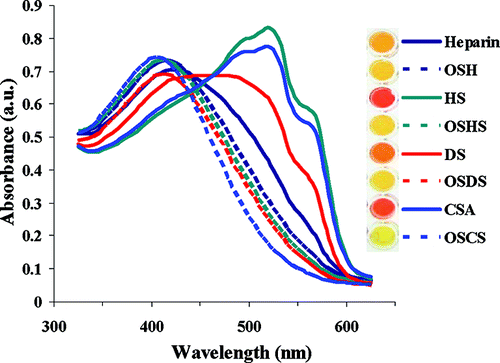Toward an improved test for adulterated heparin

Scientists are reporting refinement of a new test that promises to help assure the safety of supplies of heparin, the blood thinner taken by millions of people worldwide each year to prevent blood clots. The test can quickly and economically detect adulterants, including the substance responsible for hundreds of illnesses and deaths among patients taking heparin in 2008. The report appears in ACS' journal Analytical Chemistry.
David Keire and Cynthia Sommers explain that in 2008, a number of patients died and hundreds patients became seriously ill after receiving batches of the blood thinner that had been adulterated. The U.S. Food and Drug Administration announced a major recall of heparin, and scientists identified the culprit — a substance called "oversulfated chondroitin sulfate" (OSCS). OSCS is a synthetic dietary supplement derived from chondroitin sulfate type A that some people take to treat osteoarthritis. Like heparin, OSCS also prevents blood from forming dangerous clots. But unlike heparin, OSCS can trigger potentially fatal anaphylactic reactions in sensitive individuals. Scientists concluded that OSCS, which is inexpensive, had been intentionally added to heparin as a so-called "economically motivated adulterant" (EMA), to boost profits. Current tests to detect EMAs in heparin are difficult to perform and must be done in laboratories.
To overcome these challenges, the researchers developed a simple color test in which normal heparin samples turn red in color but OSCS contaminated samples do not change color. In the present study, Keire and Sommers wanted to know whether their test could detect additional EMAs. They found that the test could detect several other possible EMAs, such as those that could be made by over-sulfation of waste products formed during heparin production. The researchers say that, on the basis of their results, a portable test to detect even tiny amounts of different EMAs could be developed to insure the safety of the heparin supply chain.
More information: Detection of Possible Economically Motivated Adulterants in Heparin Sodium and Low Molecular Weight Heparins with a Colorimetric Microplate Based Assay, Anal. Chem., 2011, 83 (18), pp 7102–7108. DOI: 10.1021/ac201412z
Abstract
Recently, we described a 96-well plate format assay for visual detection of oversulfated chondroitin sulfate A (OSCS) contamination in heparin samples based on a water-soluble cationic polythiophene polymer (3-(2-(N-(N′-methylimidazole))ethoxy)-4-methylthiophene (LPTP)) and heparinase digestion of heparin. Here, we establish the specificity of the LPTP/heparinase test with a unique set of reagents that define the structural requirements for significant LPTP chemosensor color change. For example, we observed a biphasic behavior of larger shifts to the red in the UV absorbance spectra with decreasing average molecular weight of heparin chains with a break below 12-mer chain lengths. In addition, the oversulfation of chondroitin sulfate A (CSA) to a partially (PSCS) or fully (OSCS) sulfated form caused progressively less red shift of LPTP solutions. Furthermore, glycosaminoglycans (GAGs) containing glucuronic acid caused distinct spectral patterns compared to iduronic acid containing GAGs. We applied the LPTP/heparinase test to detection of OSCS (≥0.03% (w/w) visually or 0.01% using a plate reader) in 10 μg amounts of low molecular weight heparins (LMWHs; i.e. dalteparin, tinzaparin, or enoxaparin). Furthermore, because other oversulfated GAGs are possible economically motivated adulterants (EMAs) in heparin sodium, we tested the capacity of the LPTP/heparinase assay to detect oversulfated dermatan sulfate (OSDS), heparin (OSH), and heparan sulfate (OSHS). These potential EMAs were visually detectable at a level of 0.1% when spiked into heparin sodium. We conclude that the LPTP/heparinase test visually detects oversulfated GAGs in heparin sodium and LMWHs in a format potentially amenable to high-throughput screening.
Provided by American Chemical Society
















